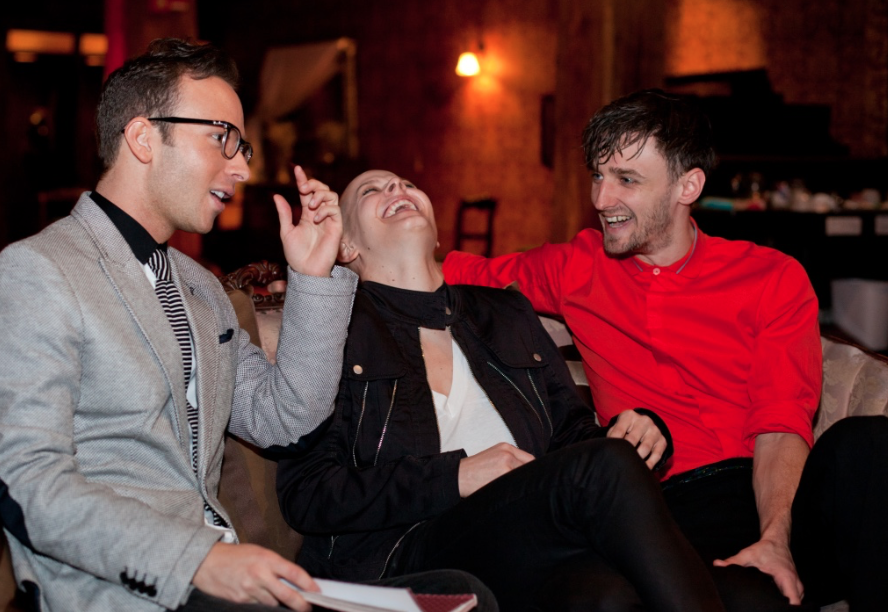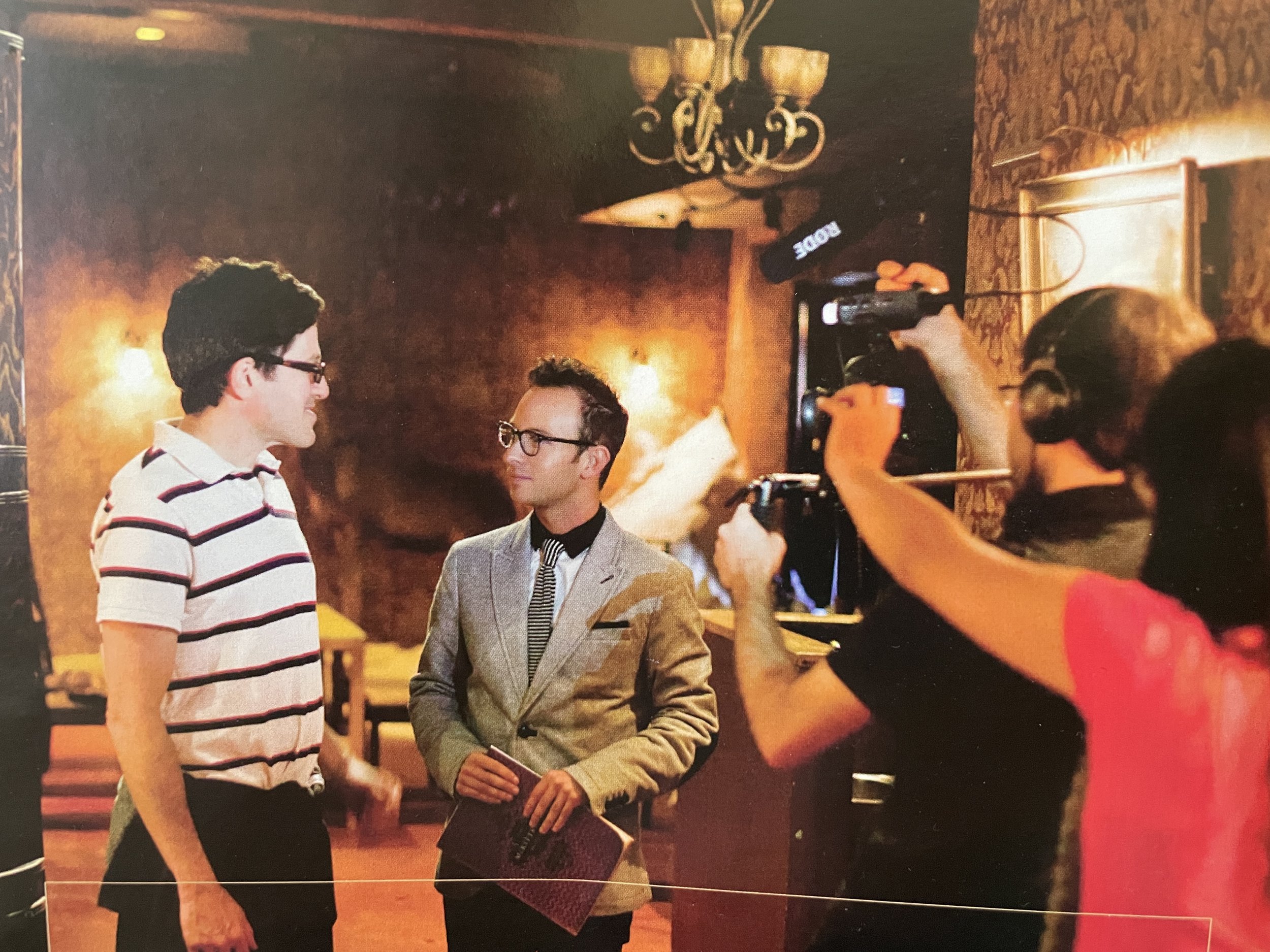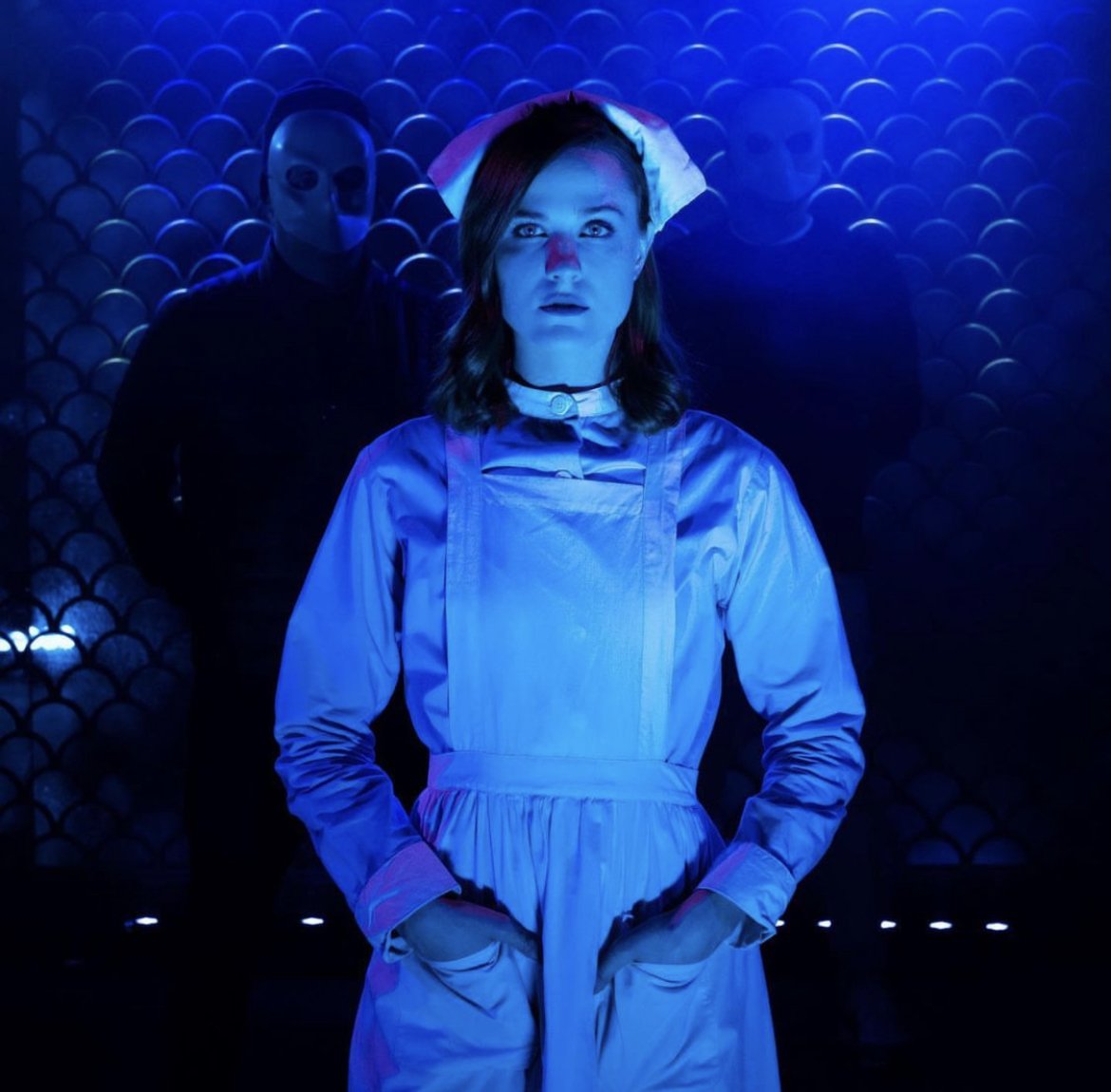Sleep No More
In the last ten years, I have created a special relationship with New York. Yet no matter how well I think I know each corner, this great metropolis never ceases to surprise me.
I enjoy getting lost in its streets, visiting the many art galleries and museums, and why not, from time to time fall into the addictive temptation of shopping? But it is undoubtedly the shows and theater installations that keep this city vibrant.
Every year millions of tourists and art lovers travel to New York to enjoy the latest on Broadway and Off-Broadway. I always find a new show to see, or a great opera to listen to. No matter how short or long the event is, I find in each escape an opportunity to learn, get inspired, and fight the sometimes monotony of life.
However, during my last trip, I discovered such an inspiring show in the theatrical field, that it seemed socially and artistically irresponsible not to share. I am speaking of Sleep No More, the most ambitious theater installation of the moment.
Produced by British company Punchdrunk, working hand in hand with the American company Emursive, they have brought to life in New York the show that is revolutionizing the quality and production standards in the performative world.
Alfred Hitchcock is said to have named the hotel in his film Vertigo after the McKittrick
Respecting the mystery that characterizes Sleep No More, and taking care of the essence of the show, I want to tell you about my experience without too many spoilers.
It all started the day I decided to buy a ticket. To the surprise of many, there is no physical ticket, you receive a confirmation about the reservation of a room at the McKittrick Hotel. If it sounds familiar to you, it is because the McKittrick Hotel built in 1939 would undoubtedly be the place to be and be seen by high society Americans of that time.
Alfred Hitchcock is said to have named the hotel in his film Vertigo after the McKittrick. Despite the immediate success that was anticipated for the hotel, expectations of splendor were short-lived as the misfortune of World War II befell the entire population, and the McKittrick never opened.
Some reports were written in The New York Times about the attempt to re-open the hotel during the 50s, however, this did not happen. Seventy-two years later, McKittrick serves as the main character in this majestic work made up of more than twenty actors and dancers on stage.
Being punctual is something I always pay great attention to, and more so because I couldn't miss a single minute of the three hours that this show lasts. At seven o'clock and in the bitter, predictable January cold, I get out of the cab at the corner of Tenth Avenue and West 27th, to discover a line of people trying to keep warm while waiting for access.
A few minutes later the doors of the McKittrick Hotel open, welcoming at least a hundred people. I must confess that although I had heard some rumors of Sleep No More, I never imagined the level of sensory experience I was about to live.
I never imagined the level of sensory experience I was about to live.
As I checked in at the main lobby, I was handed a card from a special deck with the hotel's monogram. A staff member guided me to an adjoining room adapted as a 1940s bar. But it's not just a bar, it's the McKittrick Hotel's renowned Manderley Bar, which exudes strong references from another Hitchcock hit, Rebecca.
To the rhythm of jazz and after a strong shot of absinth, they call all the guests who have card number 4. Excited, I walked to an elevator where a woman handed us a white Venetian-style mask. And this is how the bombardment of sensory stimuli nuanced with strong Kubrikian overtones continued. This mask serves a purpose. Not only does it create a distance between the actor and the audience, but it also gives freedom of anonymity that allows the viewer to lose themselves behind a homogeneous identity.
Once in the elevator, we are released by groups on different floors, thus giving us the freedom to explore the more than one hundred rooms distributed over five hotel floors. I tell you that there are six of them, but this last one remains closed to the audience, and there are just a few lucky ones who enjoy a visit to this mysterious level accompanied by those “one on one.”
Moments of personal interaction between an actor and a member of the public. Trying to explain this experience linearly is impossible. It's like when you feel like you remember a dream or a bad nightmare perfectly well, but nothing you describe makes sense. Each person lives the show from different angles.
Once I started my tour inside the hotel, I had my first encounter with an actor, who after exchanging glances, guided me toward what seemed the exterior of a street. He then began “convulsing” in a choreographed and enviable fluidity.
A minute later, he was accompanied by piercing-eyed women in flowing dresses who resembled the witches in Macbeth. Thirty seconds later the street was full of white masks, all in absolute attention to the interaction. What happened next marked my experience within Sleep No More. A third woman dressed entirely in red appeared and for no apparent reason commanded the attention of the room in a sustained panicked scream.
Before I could assimilate what was happening, a total blackout, followed by strong bizarre lights in a rave-style music scene filled the space. At that moment ritualistic scenes, full of eroticism, blood, and complexity, —worthy of a Shakespearean drama—, took place. In case this still doesn't sound intimidating enough, one of the actresses took me by the hand and involved me in the scene by covering my mask with “blood”. I must admit, that as an actor I thoroughly enjoyed this moment of pure improvisational scenes. Being covered in liquid chocolate, or “witch's blood”, I continued my journey until I found some stairs that took me to another of the five open levels.
Scenes, full of eroticism, blood, and complexity, —worthy of a Shakespearean drama— took place.
Following my instinct, and enjoying this dramatic freedom, I decided to explore the third floor. The icy air filled me with chills giving me a feeling of having walked outside. It took me only a couple of seconds to understand that I was surrounded by a dark and foggy graveyard. A light in the distance drew me into the bedroom of Macbeth and his wife. The two were having a heated discussion. The movement transcended languages, so regardless of the nationality of the spectator next to me, it was clear that we both understood body language, and in turn, the dance revealed the most intimate couple’s secrets.
We soon realized that Macbeth was covered in blood. His wife helped him bathe in a white tub in the center of the room. After three hours of wandering through the endless rooms, most of the spectators gathered in a ballroom in the basement of the hotel.
A table of twelve actors appeared in the shadows, ( in my opinion resembled the painting of The Last Supper by Leonardo Da Vinci), accompanied by prodigious lighting and sound design.
And it is here that the play culminates, preserving the mystery, but revealing the relationship between the characters and their explicit reasons for the hatred, thirst for revenge, and carnal desire that exists between them.
Once outside the McKittrick Hotel, it was impossible for me to immediately process the amount of information and stimuli that I had received. Such was my inspiration and my artistic responsibility to spread this show with readers in Latin America, that once in Mexico I contacted the creatives in London and New York.
After several filters, I had the opportunity to be the first Latin American journalist to have access behind the scenes. I had the pleasure of interviewing several actors such as Kelly Bartnik, and Conor Doyle (actor and associate choreographer), as well as producer Randy Weiner and Nicholas Bruder. We recognized each other since we studied together in Boston during our time at Emerson College.
Through our conversation, I was able to understand a little more clearly the process and the relevance of Sleep No More. Everything involved in producing and acting in a production of this level, but above all the human parts and the acting work behind the magic of these characters.
The casting process was based on movement and dance workshops where directors Maxine Doyle and Feliz Barrett were looking for people who had a very strong stage presence. By not having dialogues, they explored universal concepts such as love, death, sensuality, greed, forgiveness, and revenge through movement. This is how they were weaving history.
With totally sold-out performances, Sleep No More extends its season by opening its doors to the public over sixteen years of age. So if you are in New York, you have to witness this immersive experience, I assure you, you will not regret it.
SLEEP NO MORE
____________
SLEEP NO MORE ____________
SPANISH VERSION
En los últimos diez años he creado una relación especial con Nueva York. Y es que
sin importar que tanto creo conocer cada rincón, esta gran metrópoli no pierde su
capacidad de sorprenderme.
Disfruto perderme en sus calles, recorrer las múltiples
galerías de arte y museos, y por qué no, caer de vez en cuando en la tentación adictiva
del shopping. Pero son sin duda los espectáculos y las instalaciones de teatro las que
mantienen vibrante a esta ciudad.
Cada año millones de turistas y amantes del arte
viajan a Nueva York para disfrutar de lo último en Broadway y Off Broadway.
Siempre encuentro un nuevo espectáculo que ver, o una gran opera que escuchar. No
importa que tan corto o largo sea el evento, encuentro en cada escape una oportunidad
para aprender, conocer y abandonar la monotonía.
Sin embargo durante mi último viaje descubrí un show tan propositivo en el ámbito
teatral, que me parece social y artísticamente irresponsable no compartir.
Estoy hablando de Sleep No More, la instalación de teatro más ambiciosa del
momento. Producido por la compañía británica Punchdrunk y de la mano de la
empresa estadounidense Emursive, dieron vida en Nueva York al espectáculo que está
revolucionando los estándares de calidad y producción en el mundo.
Respetando el misterio que caracteriza a Sleep No More, y cuidando la esencia del
espectáculo, quiero platicarles mi experiencia.
Todo comenzó desde el día que decidí comprar un boleto. Y es que para sorpresa de
muchos no existe un boleto físico, recibes una confirmación sobre la reservación de
un cuarto en el Hotel McKittrick.
Si te suena familiar es porque el Hotel McKittrick construido en 1939 sería sin duda
el lugar para estar y ser visto en la alta sociedad americana de aquella época. Se dice
que Alfred Hitchcock nombró al hotel de su película Vértigo en honor al McKittrick.
A pesar del éxito inmediato que se preveía para el hotel, las expectativas de esplendor
duraron poco, ya que la desgracia de la Segunda Guerra Mundial se abatió sobre toda
la población, y el McKittrick nunca abrió. Se escribieron algunos reportes en el diario
The New York Times sobre el intento de re-abrir el hotel durante los años 50’s, sin
embargo esto no sucedió. Setenta y dos años después el McKittrick funge como
personaje principal de esta majestuosa obra compuesta por más de veinte actores y
bailarines en escena.
La puntualidad es algo a lo que siempre presto gran atención, y más porque no podía
perderme un solo minuto de las tres horas que dura este espectáculo. A las siete en
punto y con un frío intenso, predecible de Enero, me bajo del taxi en la esquina de la
décima avenida con West 27th, para descubrir una fila de personas que intentan
conservar el calor mientras esperan acceso. Pocos minutos después las puertas del
Hotel McKittrick se abren, dándonos la bienvenida al menos a cien personas.
Debo de confesar que aunque había escuchado ciertos rumores de Sleep No More,
jamás imaginé el nivel de experiencia sensorial que estaba a punto de vivir.
Una vez que hice el check in en el lobby principal, me entregaron una carta de una
baraja especial con el monograma del hotel. Un miembro del staff me guió a un salón
adyacente adaptado como un bar de los años 40’s. Pero no es solamente un bar, es el
reconocido Manderley Bar del Hotel McKittrick, mismo que exude fuertes referencias
de otro éxito de Hitchcok, Rebecca.
Al ritmo de jazz y después de un fuerte shot de absinth, llaman a todos los huespedes que tengan la carta número 4. Emocionado, camino a un elevador donde una mujer nos entrega una máscara blanca estilo
veneciana. Y es así como continúa el bombardeo de estímulos sensoriales matizados
con fuertes tintes Kubrikianos.
Esta máscara tiene una razón de ser. No solamente crea una distancia entre el actor y el público, sino que da una libertad de anonimato que permite al espectador perderse detrás de una identidad homogénea.
Una vez en el elevador, nos liberan por grupos en distintos pisos, otorgándonos así la
libertad de explorar los más de cien cuartos distribuidos en cinco pisos de hotel. Les
platico que en realidad son seis, pero éste ultimo permanece cerrado a la audiencia, y
son pocos los afortunados que gozan de una visita a este misterioso nivel.
acompañados de los cotizados uno a unos “one on ones”. Momentos de interacción
personal entre un actor y un miembro del público.
Intentar explicar linealmente ésta experiencia resulta imposible. Es cómo cuándo
sientes que recuerdas perfectamente bien un sueño o una fuerte pesadilla, pero nada
de lo que describes tiene sentido. Y es que cada persona vive el espectáculo desde
ángulos distintos.
Una vez que empezé mi recorrido dentro del hotel, tuve mi primer encuentro con un
actor, el cual después de intercambiar miradas, me guío hacia lo que representaba el
exterior de una calle. Ahi comenzó a convulsionarse de manera coreográfica y con
una fluidez envidiable. Al minuto, lo acompañaron unas mujeres de miradas
penetrantes y vestidos vaporosos que semejaban a las brujas de Macbeth. No pasaron
más de treinta segundos cuando la calle estaba repleta de máscaras blancas, todas en
absoluta atención a la interacción actoral.
Lo que sucedió después marcó mi experiencia dentro de Sleep No More. Apareció
una tercera mujer vestida completamente de rojo y sin razón aparente acaparó la
atención con un grito de pánico sostenido. Antes de poder asimilar lo que estaba
sucediendo, un black out total cubrió el lugar, seguido de fuertes luces estrambóticas
acompañadas de música estilo rave. Es aquí cuando se da lugar a unas escenas
ritualistas llenas de erotismo, sangre y complejidad, dignas del dramatismo
Shakespeariano. Por si esto aún no suena suficientemente intimidante, una de las
actrices me tomó de la mano y me involucró en la escena cubriendo mi máscara de
“sangre”.
Confieso que como actor disfruté al máximo de este momento de improvisación pura.
Una vez concluidas estas fuertes escenas y totalmente cubierto en chocolate líquido, o
para no abandonar el realismo, sangre de bruja, continué mi recorrido hasta encontrar
unas escaleras que me llevaron a otro de los cinco niveles abiertos.
Siguiendo mi instinto, y disfrutanto de esta libertad dramática, decidí explorar el
tercer piso. El aire helado me llenó de escalofríos dándome una sensación de haber
caminado al exterior. Me tomó tan solo un par de segundos entender que me rodeaba
un cementerio obscuro y lleno de niebla. Una luz a la distancia me atrajo hasta el
interior del dormitorio de Macbeth y su esposa. Ambos sostenían una discusión
acalorada. El movimiento trasciendía idiomas, por lo que sin importar la nacionalidad
del espectador a mi lado, era claro que ambos entendíamos el lenguaje corporal, y a su
vez la danza revelaba los más íntimos secretos de la pareja. No tardamos en darnos
cuenta que Macbeth estaba cubierto de sangre. Su esposa lo ayudaba a bañarse dentro
de una tina blanca en el centro de la habitación.
Después de tres horas de divagar por los interminables cuartos, se congregó la
mayoría de los espectadores en un salón de baile en el sótano del hotel. Entre las
sombras apareció una mesa de doce actores, que en mi opinion semejaba el cuadro de
La Ultima Cena de Leonardo Da Vinci, acompañados por un diseño de iluminación y
sonido prodigioso. Y es aquí donde la obra culmina, conservando el misterio, pero
revelando la relación entre los personajes y sus razones explícitas de odio, sed de
venganza, y deseo carnal que existe entre ellos.
Una vez fuera del Hotel McKittrick me fue imposible procesar de inmediato la
cantidad de información y estímulos que había recibido. Fue tal mi inspiración y mi
responsabilidad artística de difundir este show con los lectores en Latino América,
que una vez en México contacté a los creativos en Londres y Nueva York. Después de
varios filtros tuve la oportunidad de ser el primer periodista Latino Americano en
tener acceso al detrás de escenas.
Tuve el placer de entrevistar a varios actores de la talla de Kelly Bartnik, Conor
Doyle, actor y coreógrafo asociado, así cómo el productor Randy Weiner y finalmente
a Nicholas Bruder, el cual, para sorpresa de ambos, nos reconocimos ya que
estudiamos juntos en Boston.
Platicando con ellos pude entender un poco más a fondo el proceso y la relevancia de
Sleep No More. Todo lo que conlleva producir y actuar en una producción de este
nivel, pero sobre todo la parte humana y el trabajo actoral detrás de la magia de estos
personajes.
El proceso de casting fue basado en talleres de movimiento y danza dónde los
directores Maxine Doyle y Feliz Barrett buscaban gente que tuviera una presencia
escénica muy fuerte. Al no contar con diálogos exploraban conceptos universales
como el amor, la muerte, la sensualidad, la avaricia, el perdón y la venganza por
medio del movimiento. Es así como fueron tejiendo la historia.
Con funciones totalmente vendidas Sleep No More extiende su temporada abriendo
las puertas al público mayor de dieciseis años. Así que si están en Nueva York no
dejen de ser testigos de esta experiencia inmersiva, les aseguro que no se arrepentirán.
Puedes encontrar también este artículo en Hotbook Magazine o en ZINIO digital.






